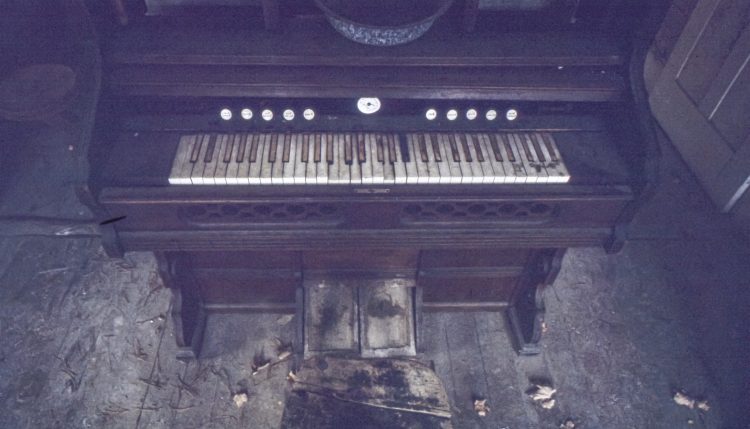
Harmonium
I went to Vermont to help my friend burn down a barn that belonged to somebody else. This was in the sixties when Gracie Slick was singing about doing things that haven’t got a name yet. Burning a barn had a name but I hadn’t done it yet.
The barn accompanied a house which was deserted except for leaves blowing on the floor and some things left behind, like the picture on the wall and a logjack, two pitchforks, and a harmonium with a stool.
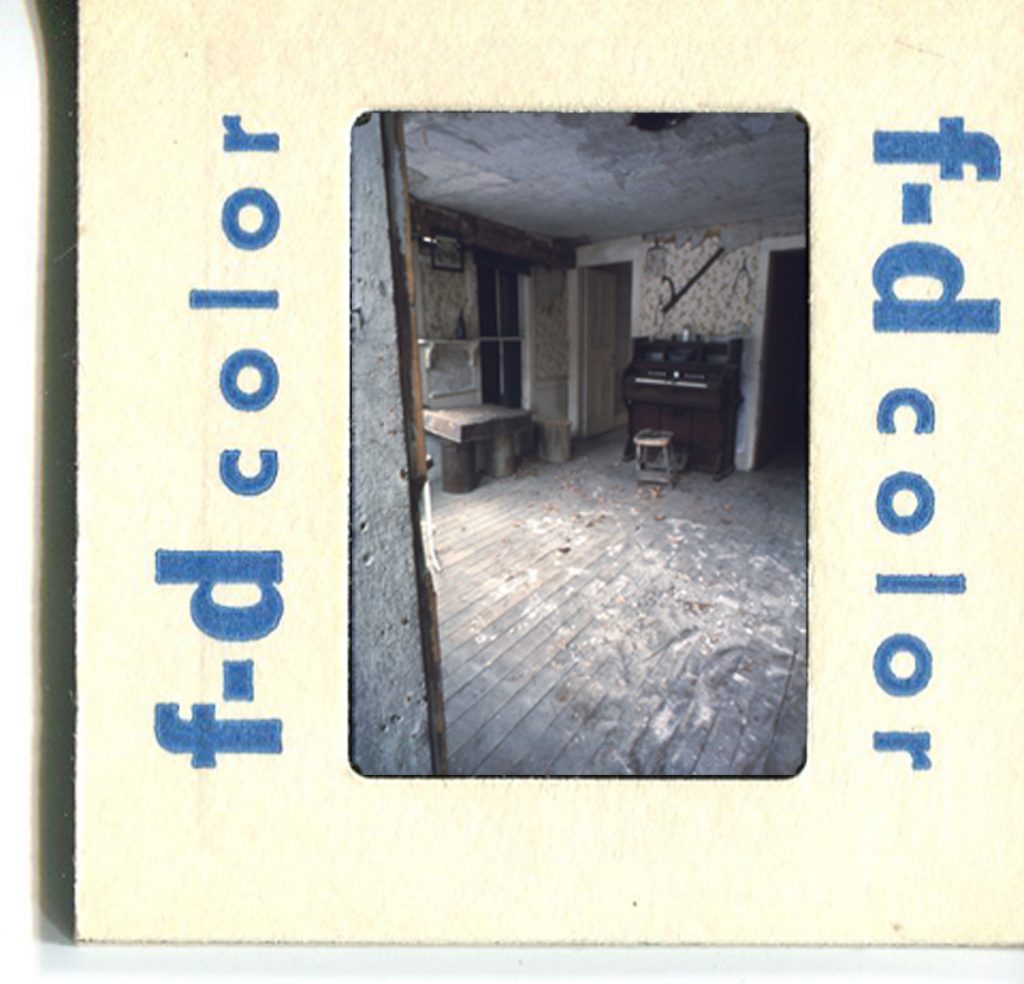
The stool made me think somebody came and went and played the harmonium. I thought somebody snuck in and played a little Bach, maybe from the Anna Magdalena Songbook, or maybe Praise God From Whom All Blessings Flow, or maybe some Doors, like Come On Baby Light My Fire.
You cannot make an organ note louder by hitting the keys harder. You do it by opening up more pipes, by pulling out all the stops. It’s the same with a harmonium, only it has reeds, not pipes. It wouldn’t be well-suited to rock but that doesn’t mean someone might have tried it.
While the barn burned I went inside the house with my camera and wide angle lens and shot the harmonium. I used a Nikon F and a 28 mm F/3.5 lens and Ektachrome and my Weston Master V light meter to make this shot.
Notice the blue patterned bowl, the decoration on the front and the different wear patterns on the left and right pedals.
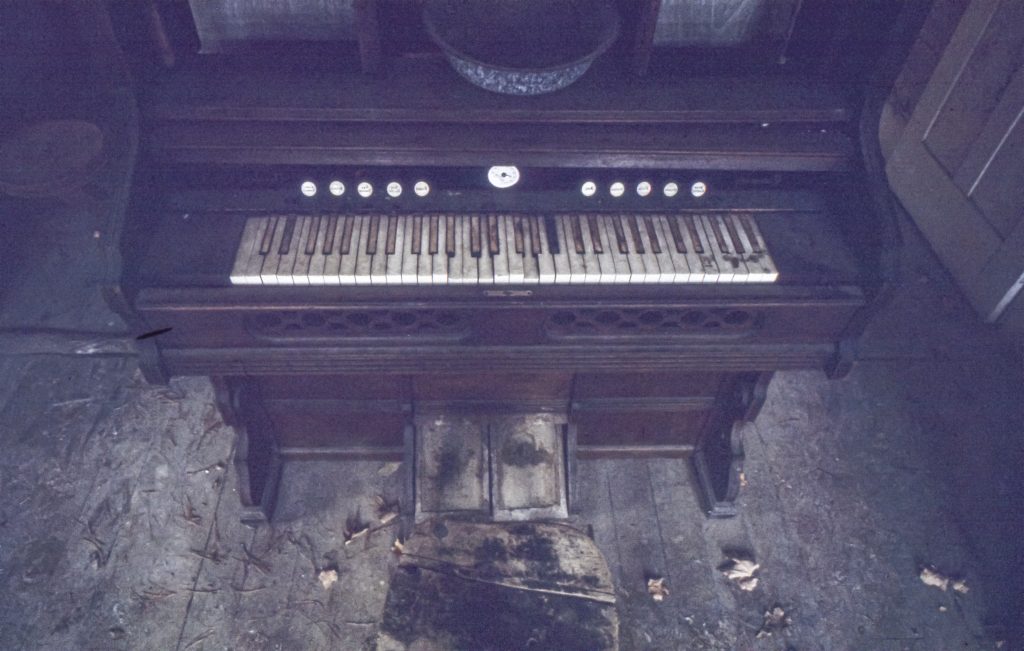
Notice four keys stuck down.
Notice that you cannot read the names of the stops.
Notice that the exposure is not perfect. It’s good to bracket, but I didn’t. With slide film you only get the one chance. Those days I used natural light exclusively. It was a statement.
I wanted the harmonium on display. I used my slide copier and bellows to make an internegative, using Tri-X film. I brutalized the Tri-X by developing it in hot Acufine, which produced coarse clumpy grain. I enlarged and cropped and printed the harmonium on 16 x 20 Agfa Brovira matte #6 paper, to get the effect I wanted. I flipped it left-to-right, and I can’t remember why.
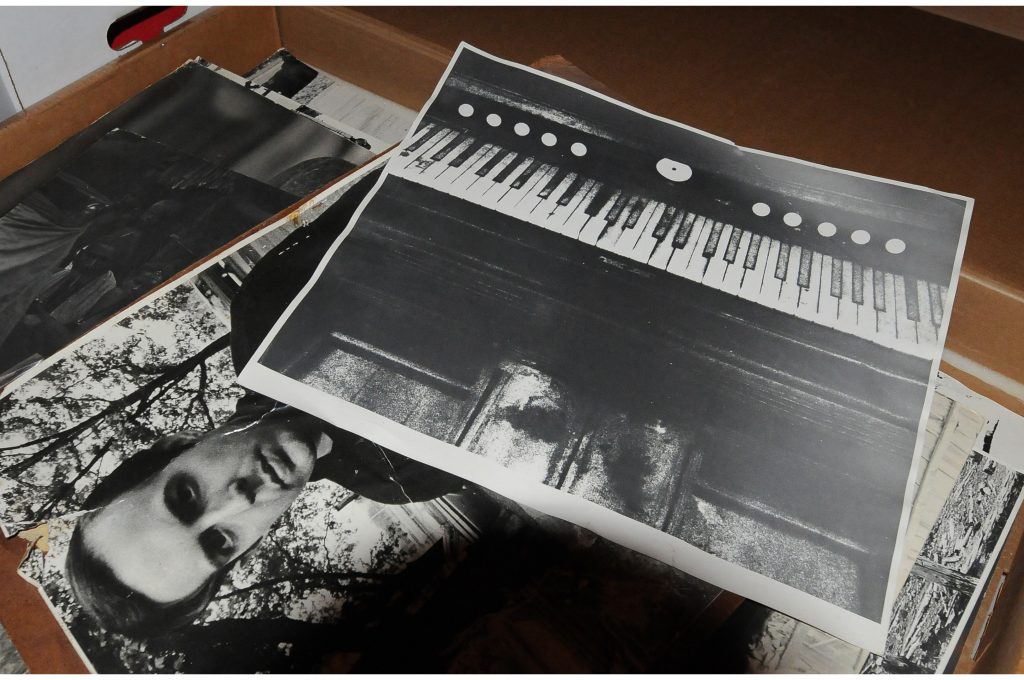
In the sixties grainy high-contrast was popular. I had already shot a wedding in grainy high-contrast. The couple had seen some of my prints displayed in Harvard Square and paid me to do it that style. Sometimes I wonder if they’re still together and what they think when they look at those prints I made for them.
This is what that print looked like back in 2009 when I went to my garage and found it in a box of large old prints and imaged it, which is what we say these days instead of “took a picture.” It’s torn at the top.
This image is from a digital camera. I cannot remember the stop and shutter speed I used for the slides, or how long I exposed the Agfa paper. I do remember that I used an Omega B-8 enlarger and a EL-Nikkor 50mm f/2.8 enlarging lens, a Simmons easel, and a Gray-Lab timer. In 2013 I tried very hard to give away the B-8, but even the local thrift store wouldn’t take it. My heart hurt when I put it out at the curb.
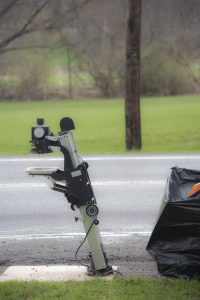
Only people who knew me when I was young will recognize me there under the harmonium print. In that picture, which my first wife took, I have a Hasselblad 1000F slung around my neck. I don’t remember how much it cost, but it wasn’t much.
I will never own another Hasselblad.
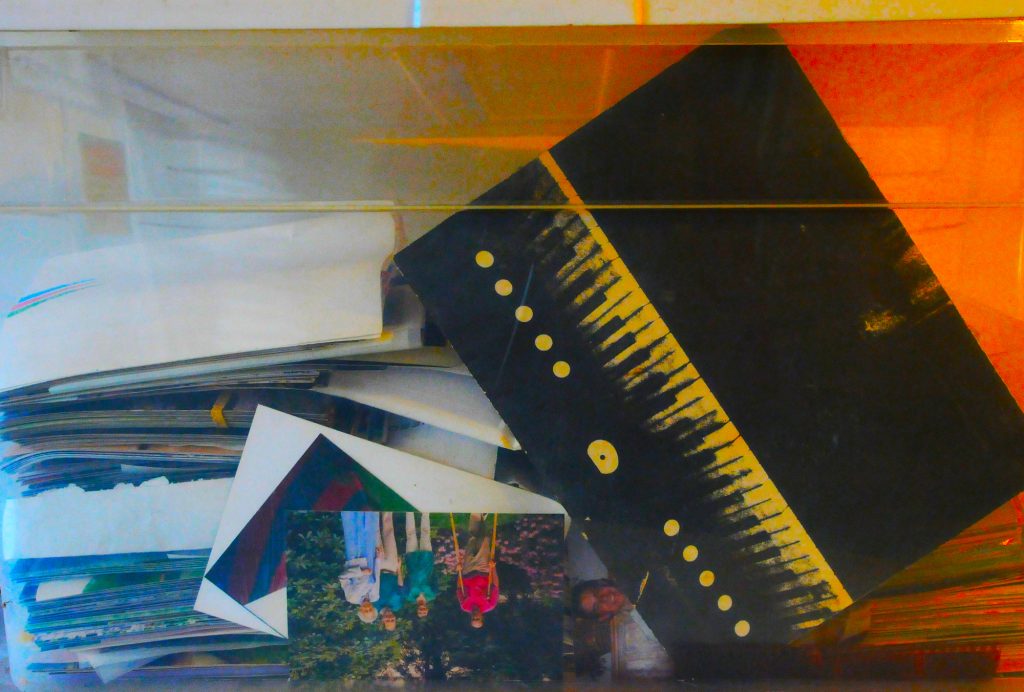
I made a smaller print, bringing out even more grain and killing off more of the tonal gradation. My stark print expressed the harmonium’s intrinsic limits. I loved the velvet black that replaced the slide’s soft brown patterns. The harmonium picture stayed askew in that plastic tub in the garage along with some photofinisher prints for many years. You can see my son’s head in a triangular frame and that’s me upside down with crutches, and my mother, now dead, and two people I knew from college, all in a picture taken by my second wife. I don’t know where she is or what she’s doing.
You can see that I played with colors by sliding the Vibrance and Saturation sliders with abandon.
I am happy to have a Vibrance Slider at my disposal for photography, but I long for a biological anologue. In old age I feel less vibrant than I did when I was twenty-five, which is when I made the original harmonium image, which not long ago I framed and hung on my wall near a window looking out onto my barn, which is just over twenty years old. The print is nearly sixty years old. I do not expect to burn my barn. I hope someone will take the harmonium print when I’m gone.
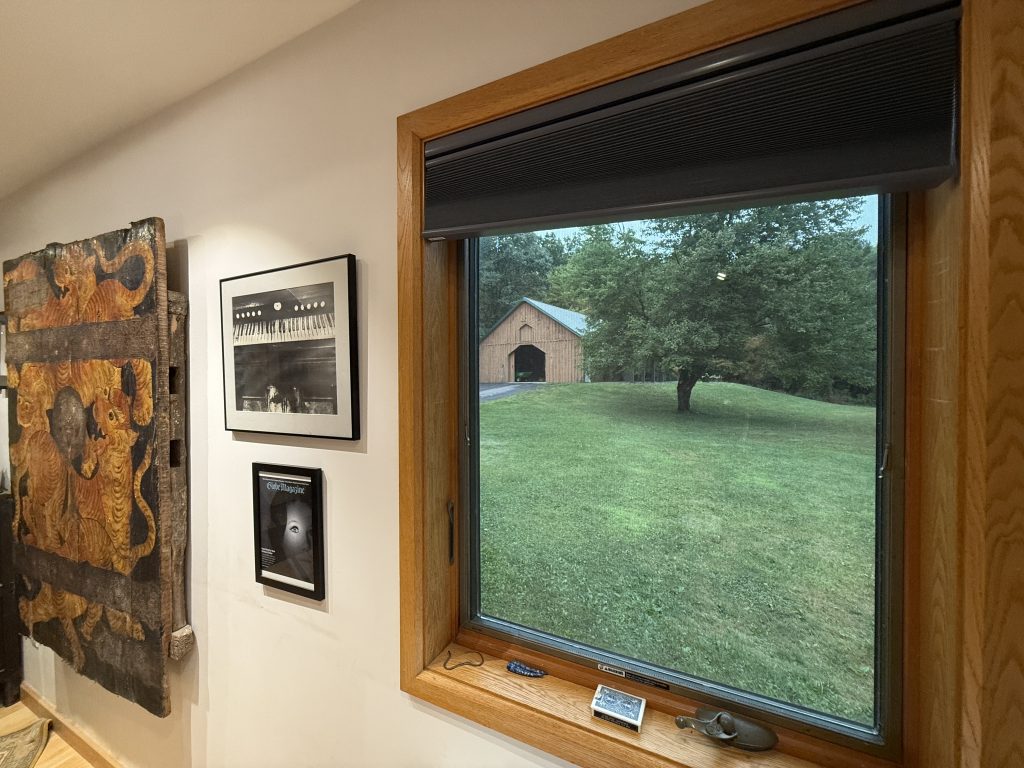
I am saturated with memories, sounds, pictures I took, images I have altered, simulacra whose power exceeds that of the originals but does not deny them, as I do not deny the young man who burned a barn and took pictures only of what he did not burn.